
Welcome back to my Tomorrowland series. Today I’ll cover Carousel of Progress.
In case you missed the previous parts:
Part 1 – Tomorrowland An Overview – Flight to the Moon – Mission to Mars
Part 2 – Circle-Vision movies – If You Had Wings – Dream Flight
Part 3 – Skyway – Star Jets – WEDWay PeopleMover
Many people believe that the Carousel of Progress had its beginnings at the New York World’s Fair. But that’s not the case. Years before the fair, the General Electric Company’s Lamp-Division approached Walt about building an attraction at Disneyland that showcased electricity. Imagineers proposed Edison Square, an offshoot of Main Street. Here, guests would be treated to several tableaus highlighting the advantages of electricity and electric appliances, much like the show today. However, guests would walk from theater to theater. In addition, an “electro-mechanical” man to be named Wilbur K. Watt would host each segment. Unfortunately, technology had not yet caught up with Walt’s dreams and the early AudioAnimatronics man did not live up to expectations.
In this next picture you can see an artist’s rendering of Edison Square as it was displayed on souvenir maps of the late 50’s and early 60’s. Although you can’t make out the text, it reads:
Diorama of Inventions
American Home Pre-Electricity
American Home Advent of Electricity
Contemporary Living
The Electric Age

In the end, Edison Square was never realized. However, Imagineers are fond of saying “No good idea ever goes unused.”
The 1964/1965 New York World’s Fair was envisioned by several businessmen who fondly remembered their experiences years earlier at the first New York World’s Fair which ran from 1939 to 1940. They wanted to recreate this exhibition on a much grander scale for their children and grandchildren. However, an undertaking of this magnitude required someone experienced at raising large amounts of money and getting things done on schedule, so they turned to Robert Moses. Moses was an influential player in the growth of New York City from the 1930’s to the 1950’s. He was responsible for the construction of much of the city’s highway infrastructure and, as Parks Commissioner, the creation of many of the city’s parks.
It’s interesting to note, the 1964 New York World’s Fair was never sanctioned by the Bureau of International Expositions. Because of this, major governments such as France, Germany, Great Britain, Australia, and Canada chose not to be represented. Most of the nations that did participate did so under tourism and industrial sponsorship.
Since the fair would not benefit from governmental financing, Moses needed to find other sources to fill his pavilions. Having heard glowing reports about Disneyland, he flew to California to meet with Walt. Upon his arrival, Walt asked Moses if he’d like to be introduced to Mr. Lincoln. After shaking hands with an early AudioAnimatronics figure of the sixteenth president, Moses insisted that Walt and Abe be a part of the fair.
The idea for Edison Square resurfaced with the impending fair. The concept was reexamined and possibilities explored. Eventually, the attraction was renamed “Progressland” to coincide with GE’s current marketing slogan, “Progress is our most important product.” In addition, Walt insisted that his Imagineers figure out a way to incorporate his new AudioAnimatronics into the attraction.

At the fair, Progressland was housed in a large, three-story domed structure. The dome was made up of crisscrossing tubular steel girders. Not only did this design facilitate relatively quick construction, it would also be easy to dismantle after the fair for salvage.
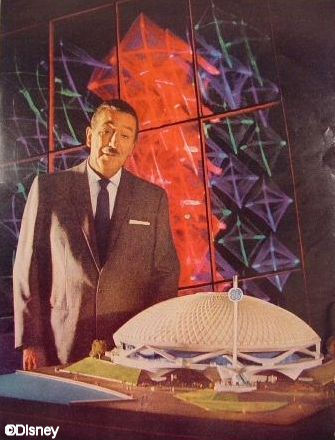

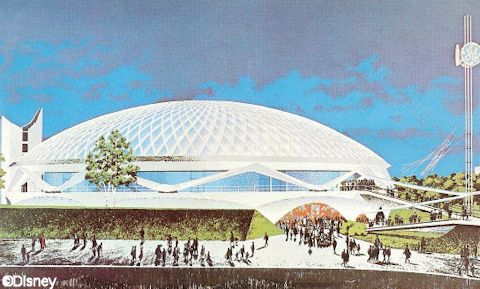
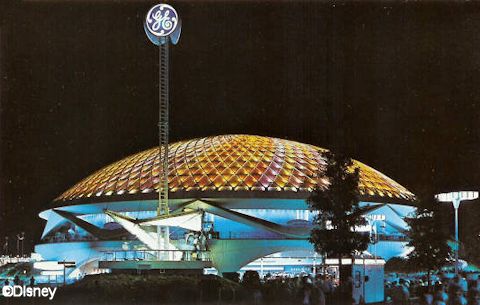
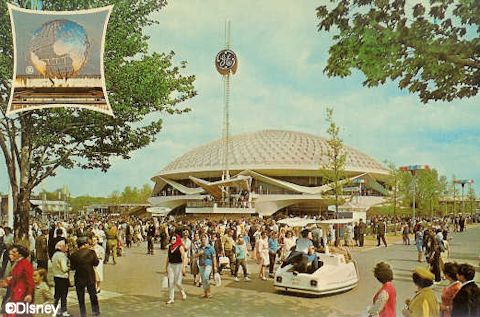
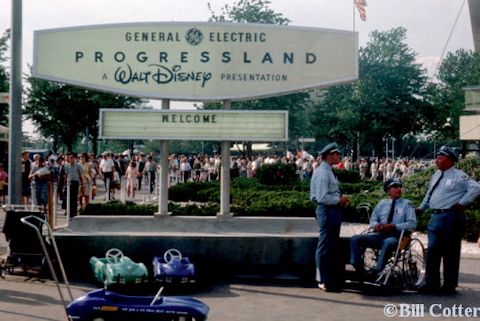
Guests entered Progressland on the first floor and rode an escalator to the second. Here they arrived at one of six theaters that revolved around a central core of six stages. After getting settled and the overture played, the theater rotated 60 degrees to view the first of four vignettes. This stop brought us to a typical American household of the late 1890’s (if you were rich). A gentleman (Father) is sitting comfortably in the kitchen, pipe and newspaper in hand. It’s springtime and life is good. For the next four and a half minutes, Father introduces us to his family (wife Sara, daughter Jane, his son, grandma and grandpa, and cousin Orville) and tells us all about the marvels of the age. At the conclusion, the theater once again rotates and brings us to the 1920’s. Once again, Father is sitting in the kitchen and explains to the audience how wonderful life is, much of it due to electricity. “General Electric” is mentioned in each vignette and the name is prominently displayed on the appliances. After the 20’s we visit the 40’s, then the 60’s where Father continues to educate us about life in each era. Every rotation advanced us 20 years. This unique theater could accommodate 3,600 guests per hour.
To help the transition between sets, a song was needed. Walt turned to Richard and Robert Sherman and presented them with the task. He told them that he needed a tune that was essentially a commercial jingle. It needed to be short, catchy, and upbeat. And it also needed to lend itself to various styles such as ragtime and swing to blend with the various eras depicted in the show. It took the brothers a couple of weeks and when they thought they had what Walt was looking for, they invited him to their office to hear their new song. When they were done, Walt said, “That will work fine.” From Walt, this was high praise.
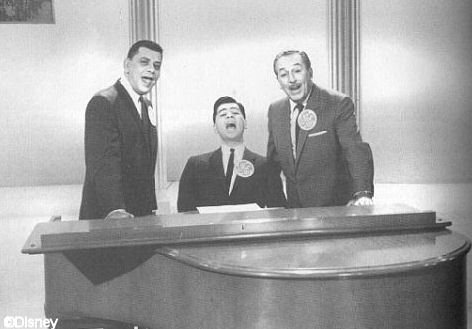
After viewing the last vignette of the show, the theater rotated once again. Guests left their seats and took an escalator to the third floor and the Sky-Dome Spectacular. This show, projected on a 200-foot-wide overhead screen, chronicled man’s struggle to harness nature and discover new forms of energy. At the films conclusion, guests moved to a new location where they were treated to a demonstration all about the creation of nuclear fusion ” “The greatest science display at the fare.”
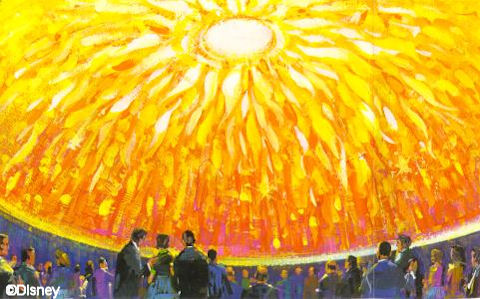
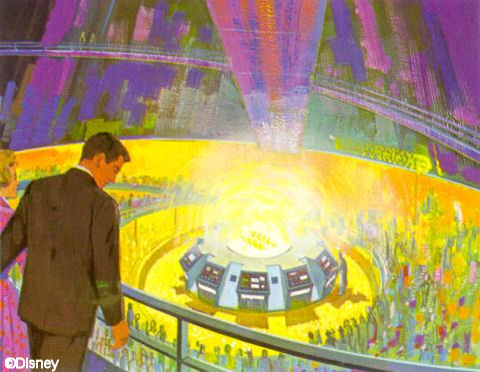
From the Sky-Dome, guests returned to the first floor and were free to tour the all-electric wonders of Medallion City. Here, they continued to witness the advancements electricity had brought to their lives and communities.
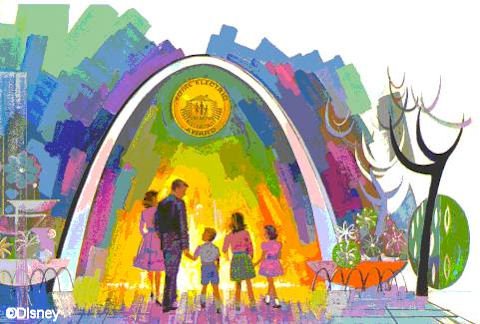
At the fair’s conclusion on October 17th, 1965, 51 million people had visited. This figure is considered respectable for an exhibition of this nature, but attendance was actually 20% lower than projected. During the fair’s two year run, Progressland was one of the most visited pavilions (up to 45,000 per day). In the end, the fair lost large amounts of money and allegations of gross mismanagement were levied. Today, because of its “unofficial” nature, the fair is often overlooked by historians when the subject of World Fairs is bantered about. However, the fair greatly benefitted Walt Disney.
From the very beginning, Walt planned on bringing Progressland and his other World’s Fair exhibits back to Disneyland. In essence, he was able to get outside organizations to fund the research, development, and construction of his attractions. But the fair helped Walt in other ways. In the early years, Disneyland’s Tomorrowland was lacking. But with the addition of Progressland, now to be called Carousel of Progress (CoP), Walt could persuade other companies to sponsor attractions in his Anaheim park. Goodyear signed on to sponsor the PeopleMover and both McDonnell-Douglas and Monsanto agreed to greatly upgrade their existing attractions.
In 1967, an all-new Tomorrowland debuted at Disneyland. For the first time, this land truly demonstrated Walt’s vision of the future and attendance soared. Unfortunately, Walt never saw this wonderful expansion completed as he died on December 15, 1966.
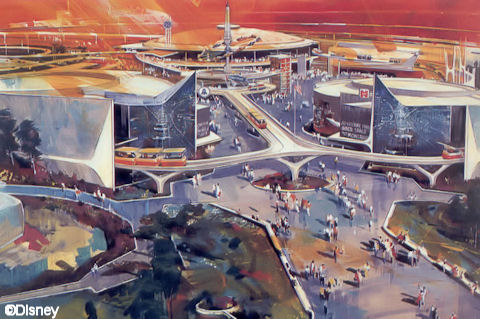
Although a new building was needed at Disneyland to house CoP, the props and AA figures arrived from New York virtually intact. However, the show would be tweaked slightly. First, all references to GE’s now defunct “Medallion Home” advertising campaign were discarded. Mother’s voice was rerecorded. Father moved from a bench to a barstool in the 1940’s kitchen. The final, Christmas scene was updated slightly. And the Sky-Dome Spectacular became history. The attraction opened at Disneyland on July 2, 1967.
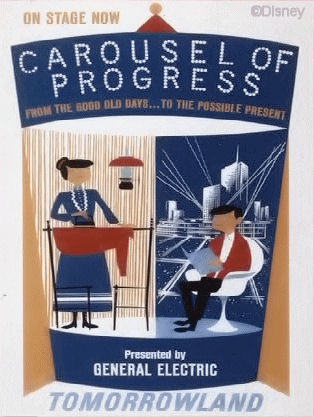
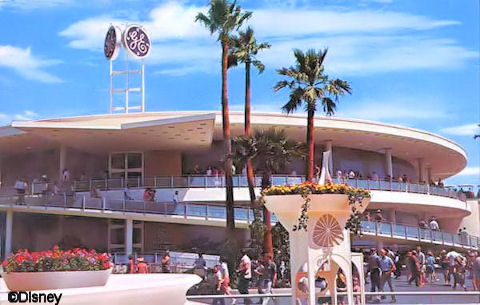
Father, the star of the show, was voiced by Rex Allen at the World’s Fair and Disneyland. Allen was a western film actor, singer, and songwriter. In his later years, he narrated a number of Disney nature films and television shows.
Since CoP was a blatant advertisement for General Electric, it was decided that guests shouldn’t be required to relinquish a ticket (what would have been an “E” ticket) to see the show. This added greatly to its popularity. Other free attractions at the time were Great Moments with Mr. Lincoln (presented by Lincoln Savings and Loan), Adventures thru Inner Space (presented by Monsanto), and America the Beautiful (in Circle-Vision) presented by AT&T.
After getting settled in the first theater of CoP, an on-stage curtain rose to reveal a wall of textured plastic called “Kaleidophonic Screens.” As Father voice welcomed us aboard, colored lights, behind the plastic, blinked and changed with his narrative. In the 1960’s, this was an impressive sight.
The story began in the late 1890’s. Father opens Act 1 by saying “Well, the robins are back. That’s a sure sign of spring.” In this version of CoP, each act represented a different season, spring, summer, autumn, and winter.

In Act 1, Father tells us of the modern conveniences they enjoy such as gas lamps, telephones, and the latest design in cast iron stoves. Their ice box holds 50 pounds of ice and Rover keeps the drip pan from overflowing. It’s interesting to note, the dog had a different name in each scene, Rover, Buster, and Sport.
In a segment of Act 1, mother Sara can be seen ironing. Next to her is a young girl operating the “wash day marvel.” This character is not part of the family nor is she ever introduced or mentioned. Over the years, many have speculated as to her identity, but a positive answer eludes us.
“Hottest summer we’ve had in years,” was how Father opened Act 2. This line was keeping in the theme of “seasons.”
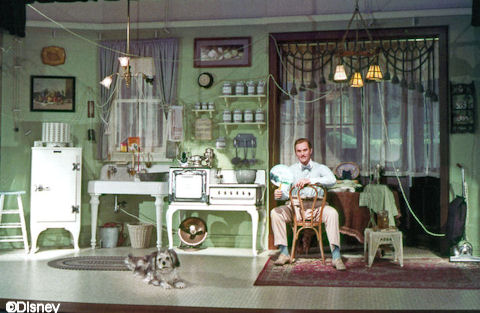
Cousin Orville is also introduced in Act 2. Orville’s only line, “No privacy at all around this place,” was voiced by Mel Blanc. Blanc is most remembered for voicing many of the Warner Brothers’ characters such as Bugs Bunny, Daffy Duck, and Yosemite Sam.
Walt was extremely involved with the design of CoP. Originally, the Imagineers had Orville’s back facing the audience. When Walt saw this, he knew better. He turned the tub around, took off his shoes and socks, and jumped into the tub. Then he said to the Imagineers, “He’d wiggle his toes, don’t you think?”
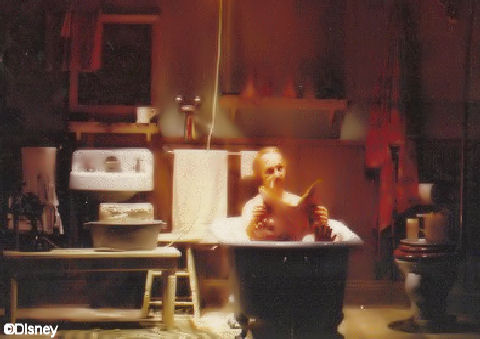
Father opens Act 3 by saying, “Well, it’s autumn again and the kids are back in school.”

Act 4 begins with Jingle Bells playing in the background and Mother and Father wishing us merry Christmas.
In Acts 1, 2, and 3, Mother was portrayed as the typical American, hardworking housewife. Her sole lot in life was to take care of the home which required copious amounts of effort. In Act 4, the Imagineers wanted to show how electricity and modern appliances had liberated the “little woman.” To demonstrate her new found freedom, she talks incessantly, barely allowing Father a word in edgewise. However, it’s very clear that she’s still the “typical American housewife.” The appliances are hers, not Fathers. And it’s Mother, not Father, who is cooking Christmas dinner. And with her new-found liberation from drudgery she has time for activities like the gardening club, the literary society, and the ladies bowling league. The idea of Mother getting a job in the 1960’s was unheard of.
If you looked out the window in Act 4, you could see a familiar sight, Progress City. This would be given greater attention in Act 5.

As Act 4 concluded, the theater rotated once again. When it came to a stop, a speed-ramp, not a stage, lay before us. Guests were asked to get out of their seats and proceed to the second floor to be reunited with Mother and Father and view Progress City.
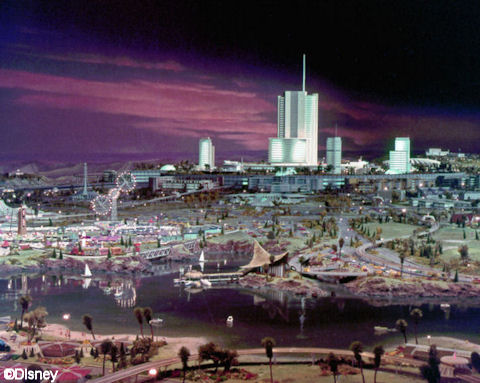
Progress City was a grand model. It was built to 1/8 scale and was 160 feet wide. It had 22,000 scale shrubs and trees, 4,500 structures (lit from within), and 1,400 working streetlights. Many of the trains, PeopleMovers, and automobiles actually moved. This was an impressive sight. Progress City was Walt’s model for EPCOT (Experimental Prototype Community of Tomorrow).
While viewing Progress City, Father and Mother highlighted some of its virtues, including the new GE nuclear power plant located nearby. Father also mentions their local amusement park to which mother says, “It’s not exactly Disneyland, but it is clean and bright and lots of fun.”
Guests exited CoP on the second floor and traveled down a long ramp to ground level.
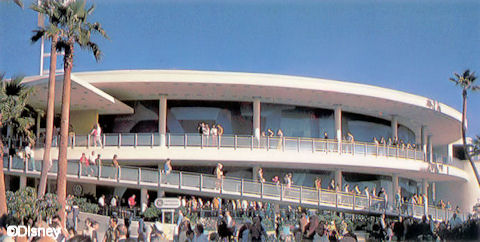
Carousel of Progress attendance began to wane at Disneyland in the early 70’s. General Electric believed that 80% of the people who saw the show were from California and felt their advertising dollars could be better spent elsewhere. They asked Disney if they’d be willing to move the show to Florida and the company agreed. CoP closed at Disneyland on September 9, 1973. Today, the Disneyland Carousel Theater is home to Innoventions and uses a stylized rendition of “There’s a Great Big Beautiful Tomorrow” as its theme song.
When CoP moved from New York to California, only minor changes were made to the attraction. That would not be the case for the move to Florida. For the most part, the sets and AudioAnimatronics figures remained the same, but other changes would be more significant. The first noticeable difference was the building. At the World’s Fair it was three stories high. At Disneyland, it was two stories. But at the Magic Kingdom it would only be one story with a loft large enough for the PeopleMover to pass by comfortably. In addition, the carousel now rotated counterclockwise rather than clockwise. Guests would also enter and exit on the first floor. Here is an early picture of CoP at the Magic Kingdom. Notice the blue and white stripes on the building.
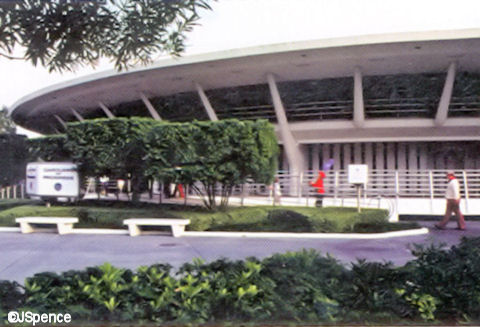
General Electric had also tired of the song “There’s A Great Big Beautiful Tomorrow.” They didn’t want to encourage their customers to “wait” for the future before they bought their appliances. They wanted them to buy them “now.” So the Sherman brothers were brought back on board and they composed “The Best Time of Your Life” or as it is also known, “Now is the Time.”
CoP opened at the Magic Kingdom on January 15, 1975. Space Mountain also opened on this same day. The sets for the first three acts closely resembled the original, but an all-new fourth act displayed an updated Christmas scene. In addition, Andrew Duggan now voiced Father. In 1981, the fourth act was updated once again to reflect a 1980’s home.
Horizons, opened at Epcot on October 1, 1983 and was sponsored by General Electric. GE also was sponsoring the nighttime spectacular Illuminations. So when their ten year contract for CoP expired on March 10, 1985, they chose not to renew. The attraction closed briefly so all references to General Electric could be removed. The GE logo was replaced with a logo that showed a stylized blueprint of the six carousel theaters surrounding the six fixed stages.
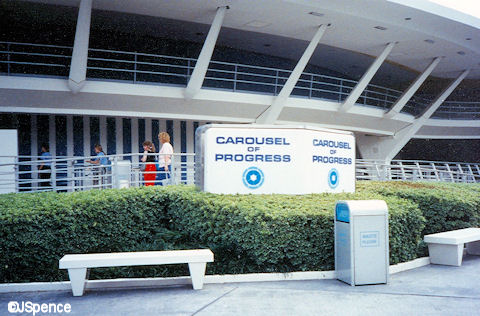
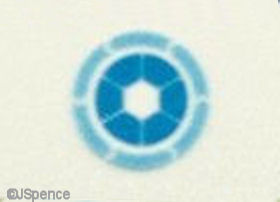
It’s interesting to note, references to “General Electric” and “Hotpoint” can still be seen on several of the appliances today.
That’s it for Part Four of my Tomorrowland series. Check back next week when I’ll be discussing Space Mountain and the Grand Prix Raceway.

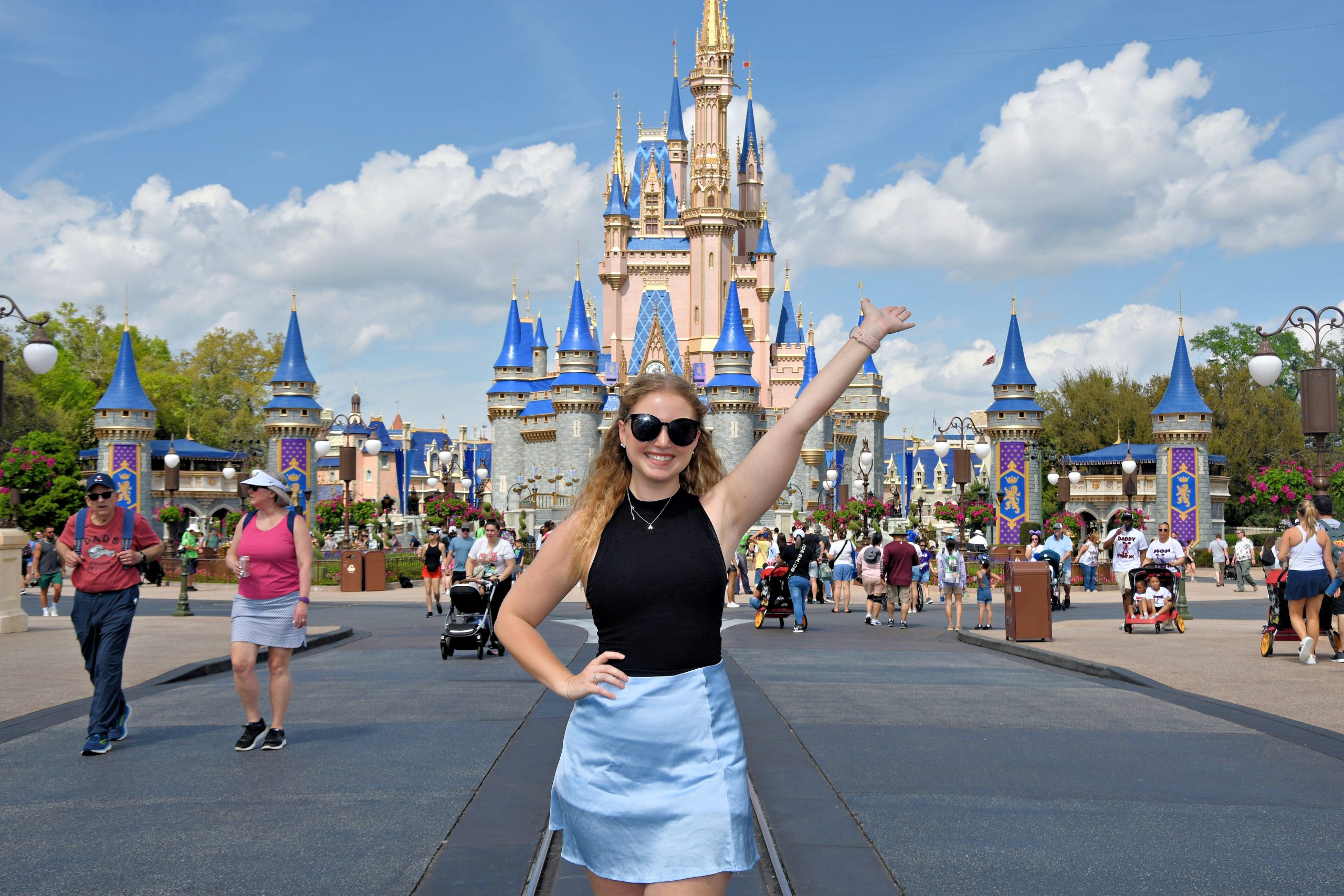
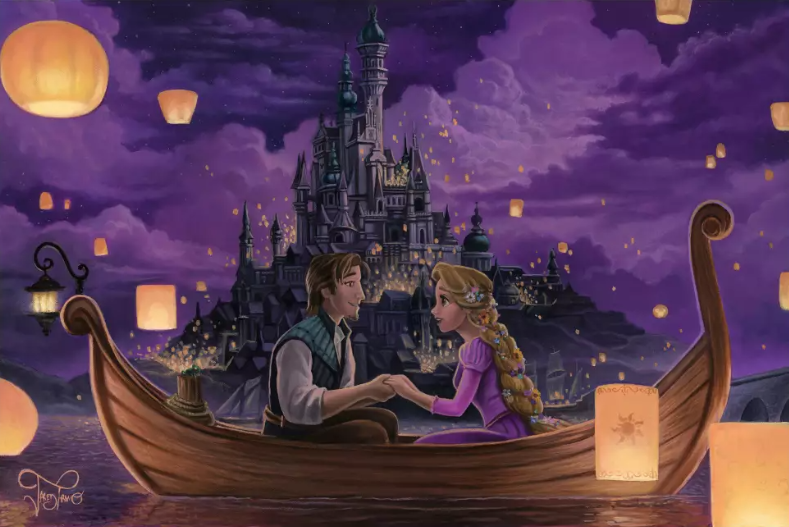

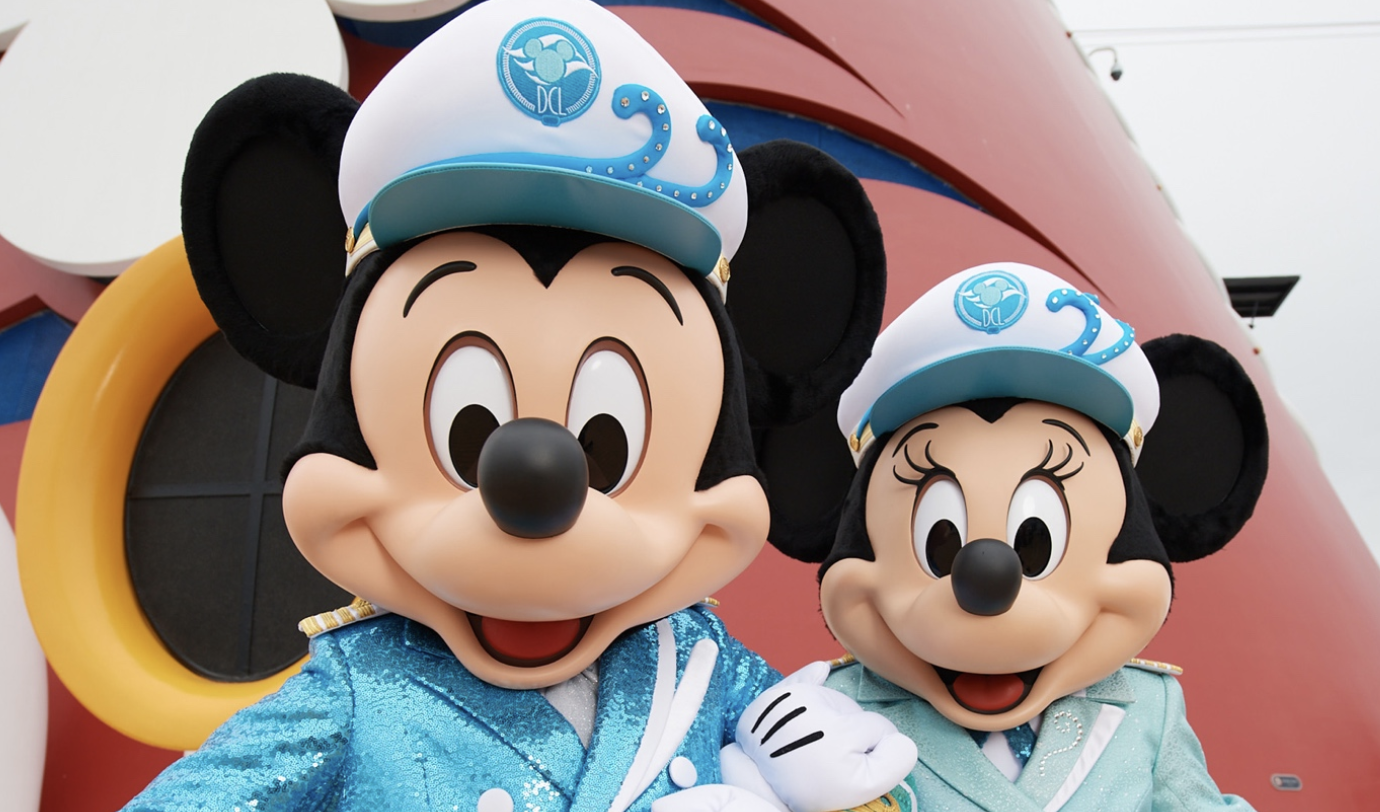
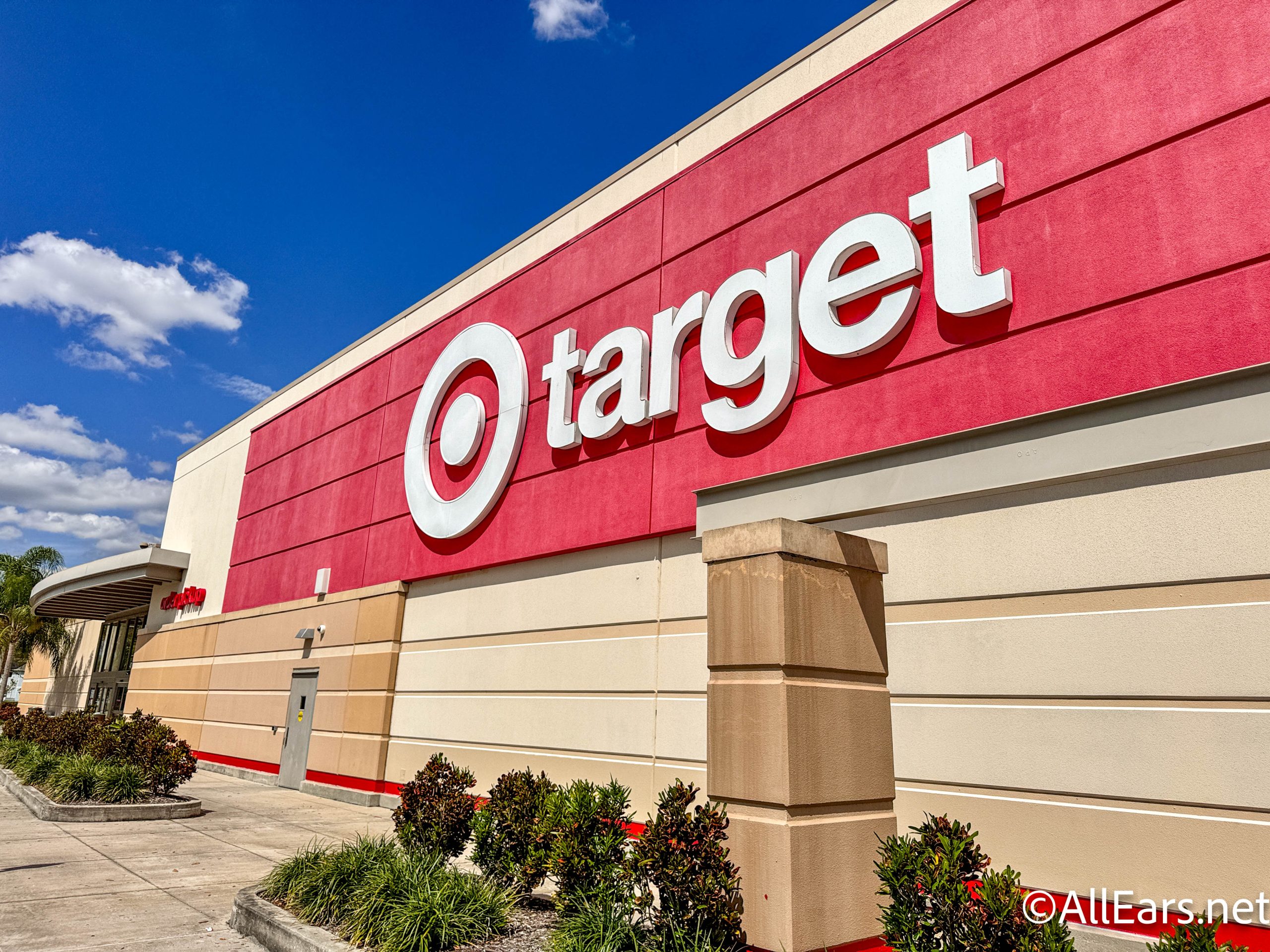
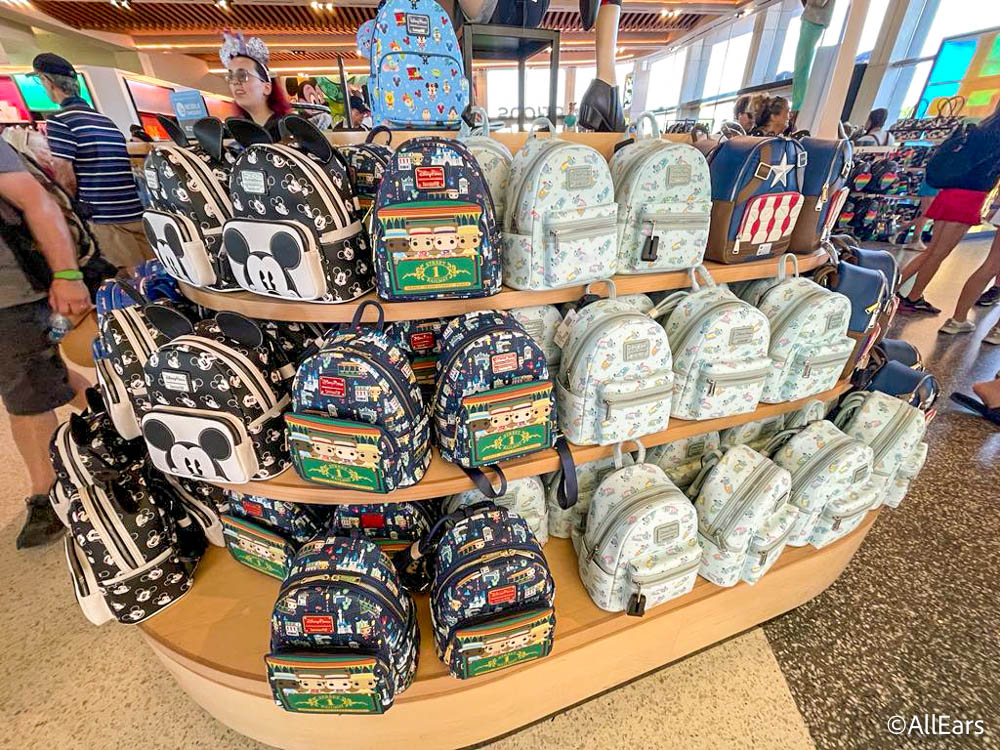


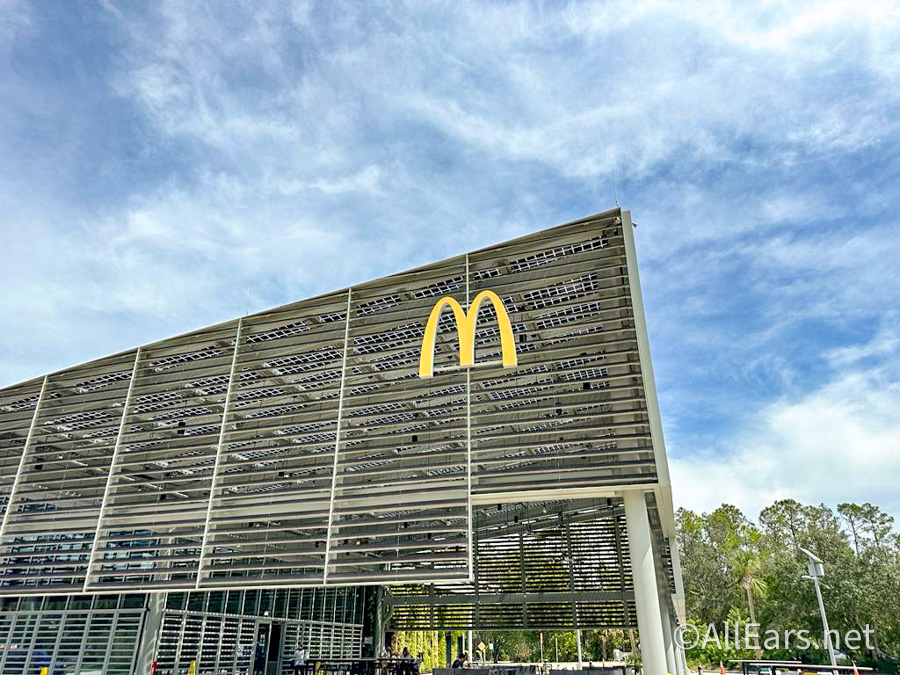

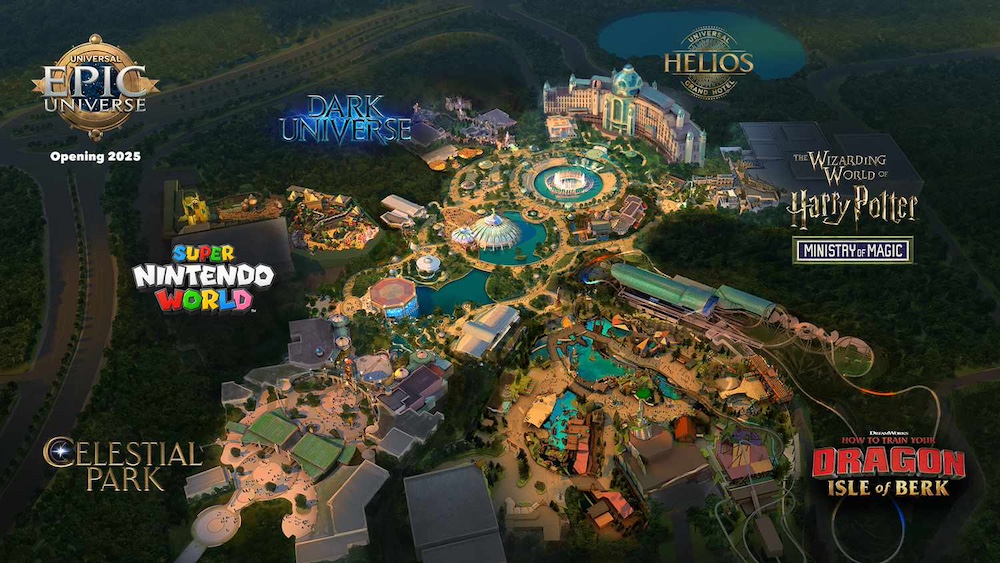
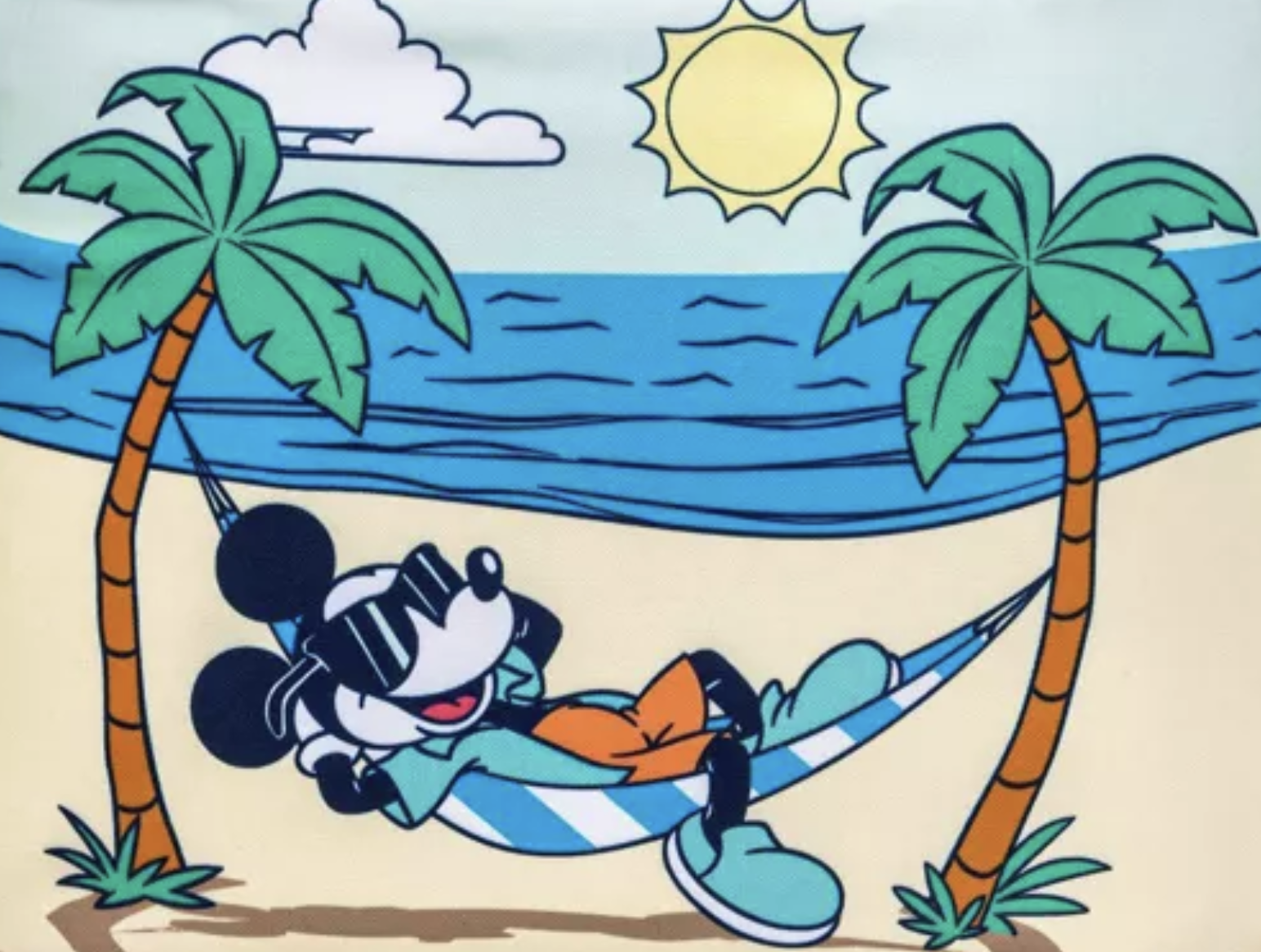
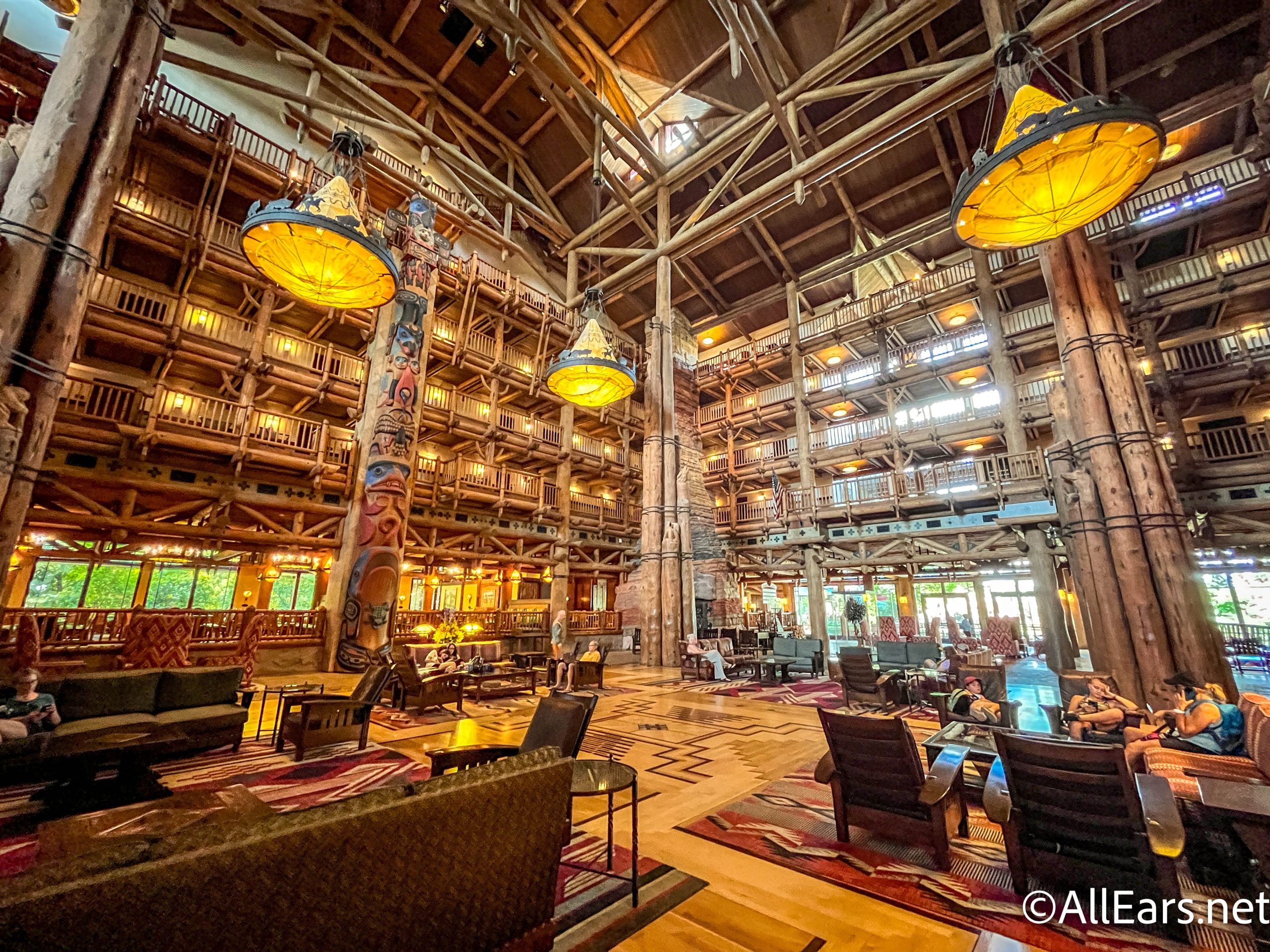
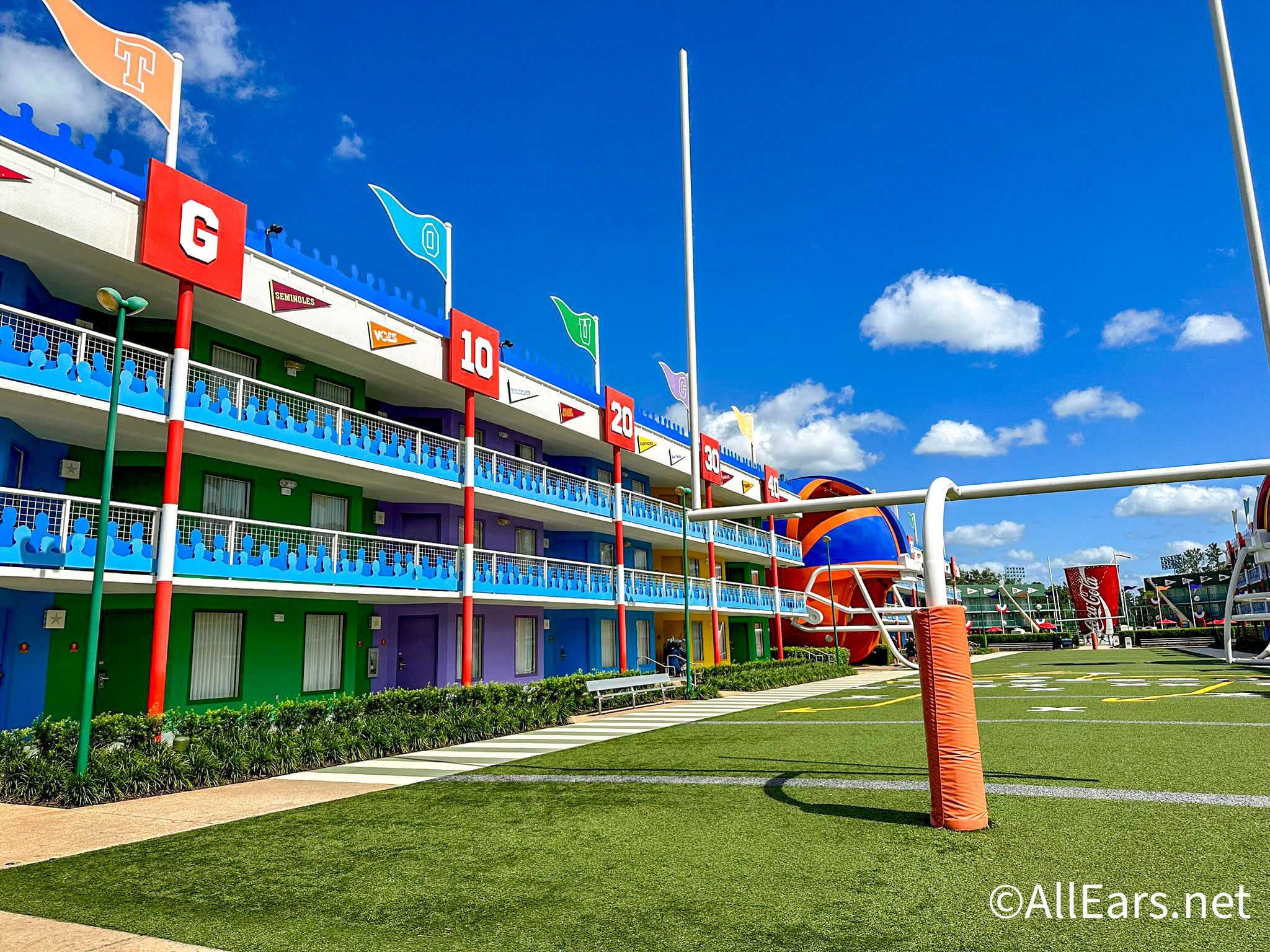

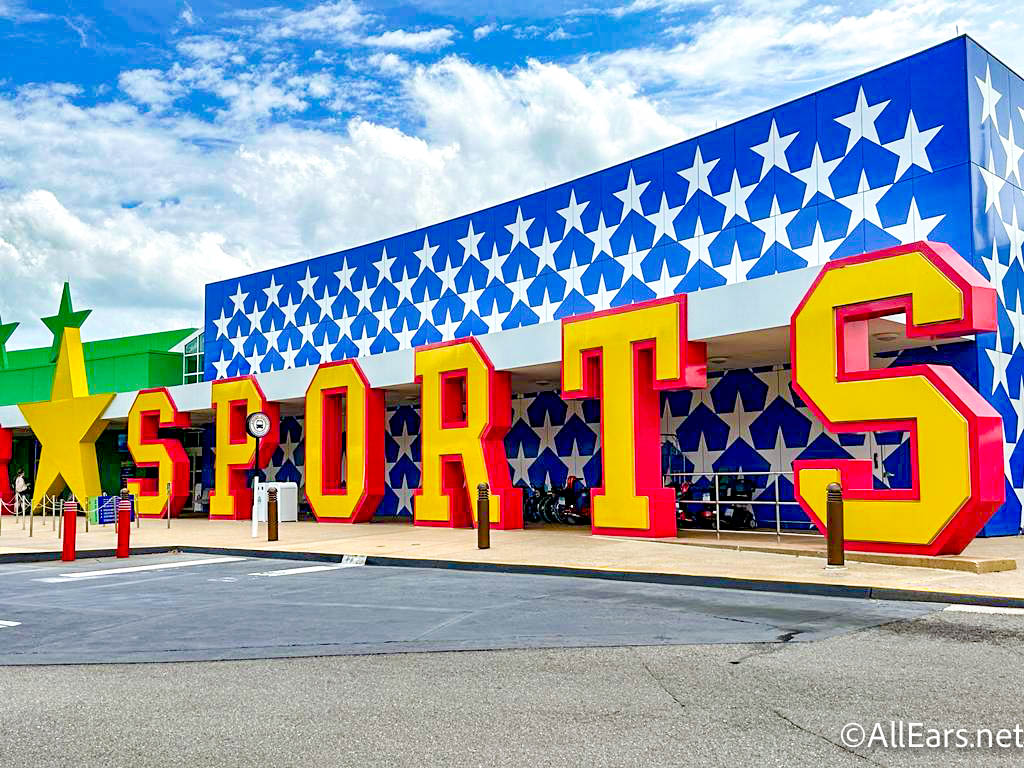
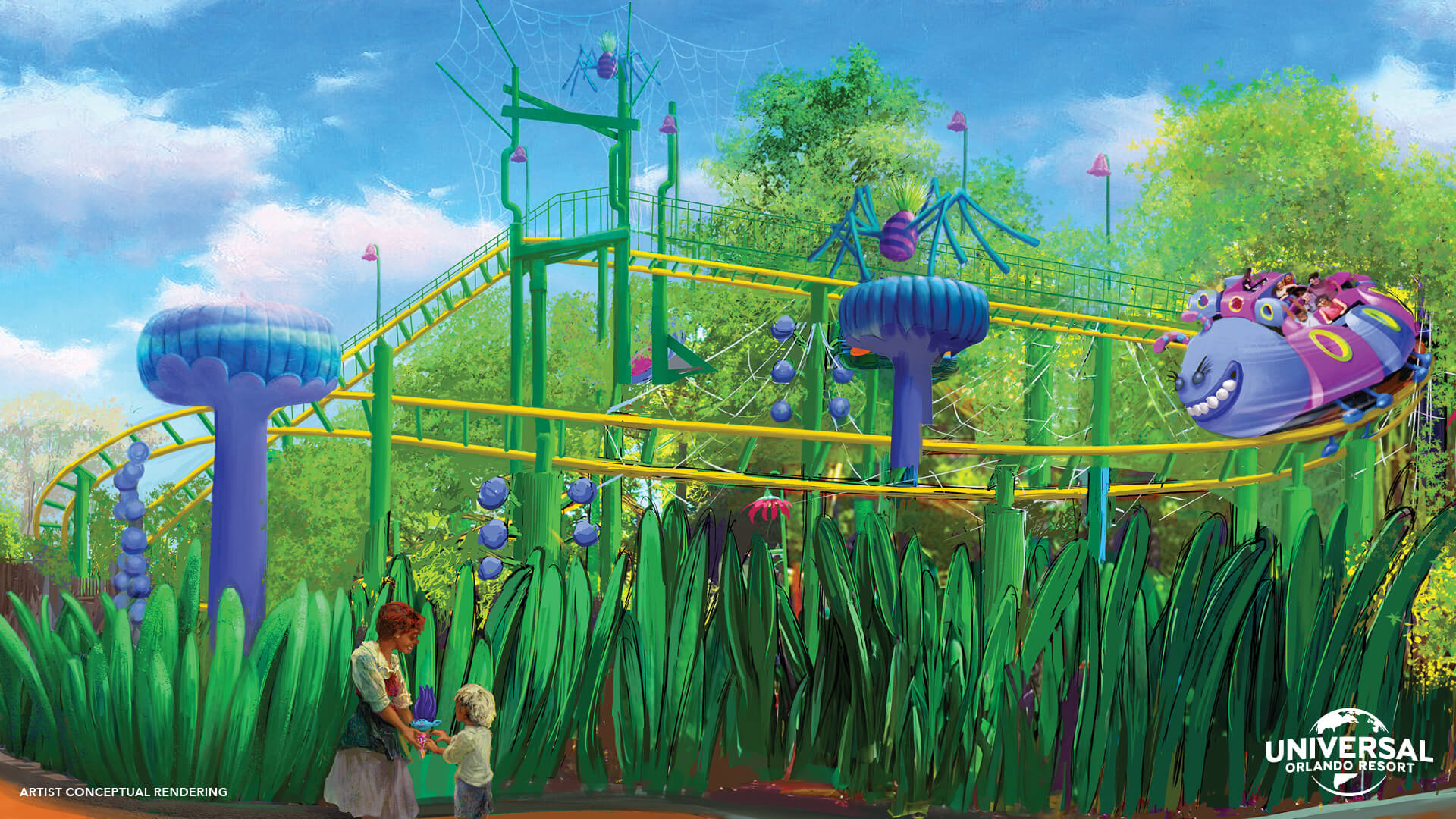
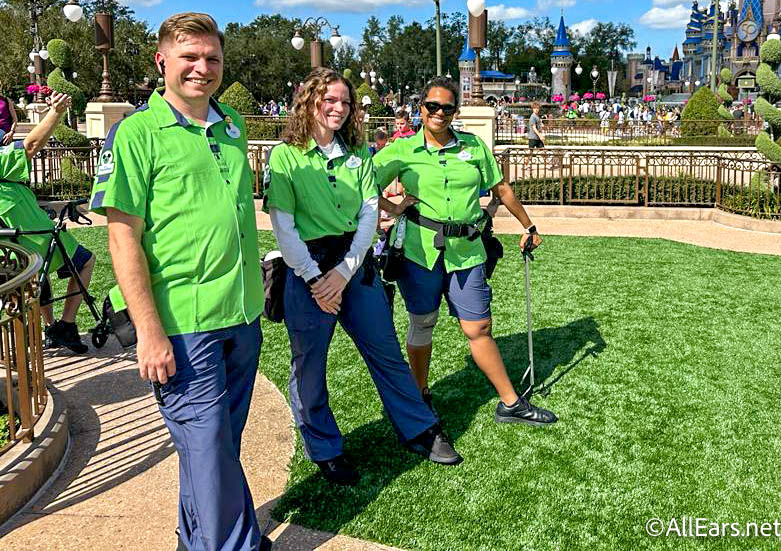

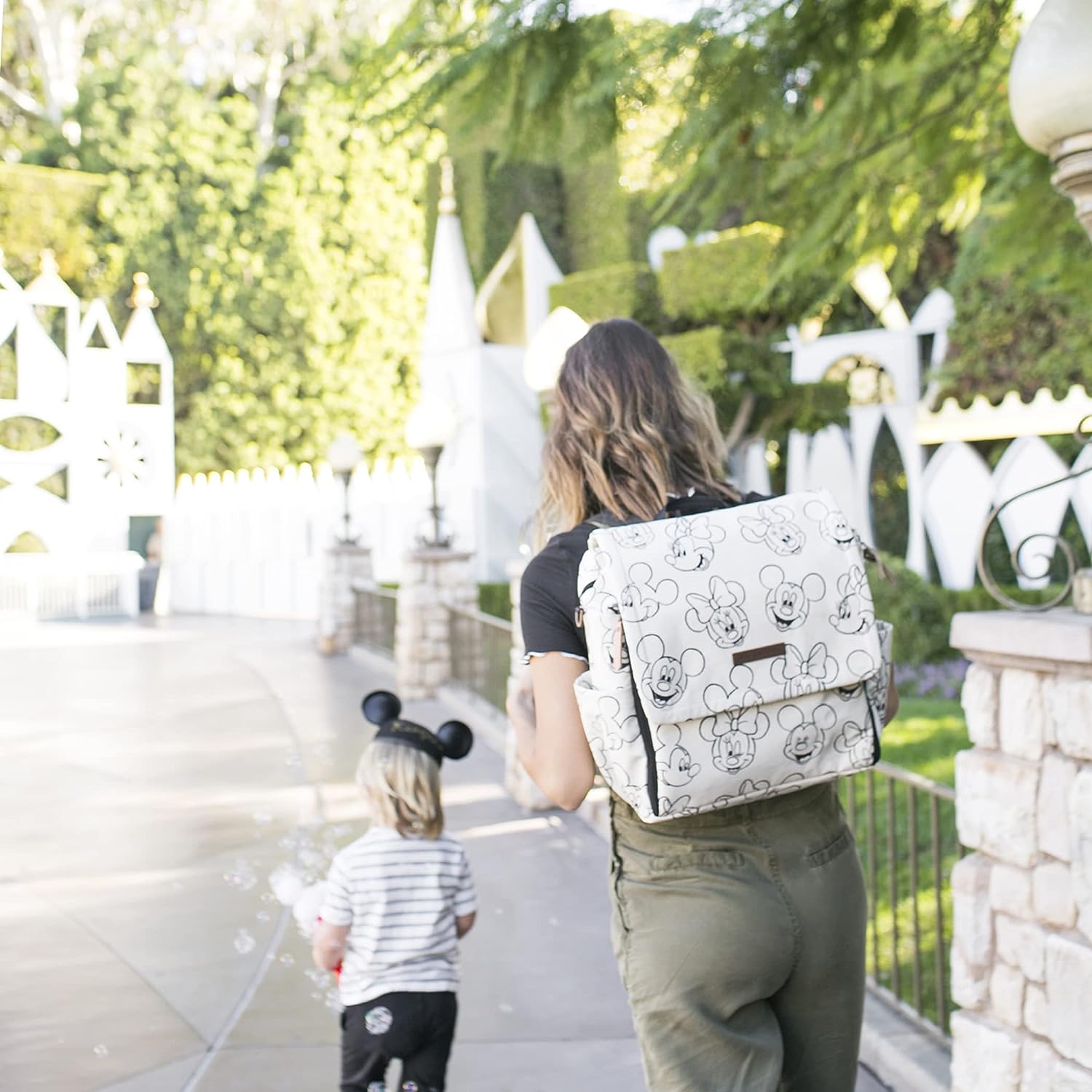

Hey. I was wondering about the disneyland version of the carousel of progress. That is was there music in the background of acts 1 through 3 as father (Rex Allen) was talking?
CoP is a don’t miss for us when we visit. This along with the peoplemover are classics for us in tomorrowland. I really enjoy the scenes from the past but do wish they would change the last scene. Tired of grandma playing the video game. Maybe have grandma face timing on an iPad, lol.
Growing up in Orange County, California in 1964, New York may have well been on the far side of the moon, much like Orlando was in 1971. I knew however that I was so very fortunate to live so close to Disneyland. There was also “Uncle” Walt showing me these wonderful attractions that I knew would be finding a new home at Disneyland.
I still remember the excitement over the artists’ renderings of the “New Tomorrowland 1967.” That first trip after the opening was so very exciting, and some of these new experiences being “free!” I still miss hearing Rex Allen as “Father,” but it’s great that he’s still there as “Grandpa.”
As usual, I learned a couple of new tidbits from your blog, as well as responses to questions from your other fans.
Hi Jack! Ah, The Carousel of Progress…I can honestly say, I haven’t seen this attraction in YEARS (there never seems to be enough time to get it all in)! But, I totally love the song “Great Big Beautiful Tomorrow.” Thank you for all the history. I appreciate all your dedication and hard work. I look forward to the next segment…
I am truly enjoying the Tomorrowland series. As usual you do a terrific job in bringing everything together.
On my very first trip to WDW in the late 70’s my favorite 2 rides were the monorail and CoP. I hope that it will never be retired but you never know so I always make sure it’s on my to-do list whenever I visit. Thanks for all of the info about the origins of a true classic…
Hi Jack,
I’m really enjoying this Tomorrowland series!
Back in the 60’s we lived within walking distance of The Fair and so my family went quite often. Problem is I was born in the Fall of ’62 and so I experienced it all from a stroller. I have faint memories of the actual Fair, but very strong memories in the years following. After the Fair had closed the park was still a wonderful place to visit. My point is this: I say I have a faint memory of “small world,” but do I really, or is it actually just a memory of my first time seeing it at the MK?
Looking forward to next weeks installment!
Take Care,
Johnny
Jack,
Your article(s) about Tomorrowland are fantastic, but your explanation above in reference to Disney’s philosophy toward their expansion/expenditures is the best I have seen.
You succinctly summed up what I wish I could shout from the rooftops on several Disney “fan” sites. Thank you!
Hi Jack,
Great blog again as always! My family (not just my wife and I, but also our 21yo son and 16yo daughter) absolutely love the CoP. My question is: Has the final scene really not been updated since 1981? It looks to me that the video game, TV, oven and computer are all from more recent times.
Also, as a suggestion for a future blog/series: How about a history of parades (my favorite attraction) at Disney?
Thanks!
Jack’s Answer:
The simple answer is this. The ride has been updates since 1981. However, I revisit Carousel of Progress in a later blog when I talk about the Tomorrowland update. More of your question will be answered at that time. You’ll just have to be patient.
Am I wrong, or did WDW switch back to “Great Big Beautiful Tomorrow” recently?
Also, I really had no idea the Carousel was moved from CA to FL. I’ve never been to Disneyland, but just assumed both parks had the attraction!
Jack’s Answer:
I will be covering this in a later blog, but yes, the music for CoP was switched back to the original song.
The “carousel” building is still at Disneyland, but the insides now house Innoventions.
Hi Jack,
Great column. The Carousel of Progress is probably my favorite attraction in all of Walt Disney World, and I would be a bit heartbroken if it were to ever be retired. Do you think that would be a possibility in the coming years? That despite it being a Disney classic that had Walt’s personal involvement, management might see fit to put in something to that would attract higher crowds? I’m keeping my fingers crossed for no.
Jack’s Answer:
Disney denies that they have any plans to removed CoP, but there are many rumors to the contrary. One rumor states that the land that was once occupied by the old Galaxy Theater and the land beneath CoP will be used for a large expansion of Tomorrowland sometime in the future.
CoP is showing its age. The theaters is never full. Yes, the show has sentimental value, but is that enough to justify its existence when something better could fill this space. I don’t know.
Hi Jack –
Thanks for the story of The Carousel of Progress; it brought back a bunch of memories.
First, I must comment on Robert Moses. For decades, he was the most powerful man in the State of New York, and was never elected to any office. He was a master law writer/bill crafter and used that skill to create many authorities and commissions of which he was in charge of.
In addition to building the highways and parks of New York City, he also built all of the New York Parkways leading to The City from Long Island and Westchester and north, most NY State Parks throughout NY State, such as Jones Beach, the Triboro Bridge and Tunnel Authority in NYC and many other varied Commissions which had to do with public works. He was also despised by many in the 1950s and 60s because he destroyed entire neighborhoods building numerous highways and bridges. Read “the Power Broker” by Robert Caro for an extremely detailed look at his life.
As I mentioned in a previous comment, I saw GE’s Progressland 50 years ago. I remember the exterior of the rotating theaters was blue and yellow, GE’s corporate colors at the time, on all its ads and packaging. One thing you didn’t mention is that there were lights on the exterior of the domed roof in blue and yellow which rotated with the theater.
I remember the Sky Dome and will never forget the Fusion exhibit – it looked just like your picture above, but I must have been closer. It seemed so much bigger! There were scientists in their white lab coats around the machine, fiddling with knobs, writing on clipboards, etc. Then it happened – the brightest flash and loudest bang I ever heard!! It scared the crap out of this 7-1/2 year old! I didn’t expect it at all.
For some reason, I remember the GE circle script logo in the center of the stage in the entry theater. I seem to remember it in 1993 or 1994, but could be thinking of 1978 or 1964.
The Carousel of Progress has created a “Magical Moment” for my family. We were going to The World at the end of September 2006. In the early 2000s, the CoP operated seasonally and there were many rumors about its removal, so we didn’t get to see it on my daughter’s 1st trip to WDW in 2003. In August 2006, I sent a letter to WDW’s main PO Box address. I told them that I had seen the CoP for the 1st time as a 7-1/2 year old at the New York World’s Fair and wondered if the CoP would be operating when we would be there, since my daughter would be also be 7-1/2 when we went. I used a variety of typefaces in the letter appropriately matched to what I was saying. A few weeks later I came home and found a message on my answering machine. The caller said he was from WDW Customer service and he had gotten my letter and didn’t think he could respond in writing before our trip, so he called to tell us the Carousel of Progress would be operating and that my daughter could see it the first time at the same age I was when I saw it the 1st time. I DIDN’T PUT MY PHONE NUMBER IN THE LETTER!! The Cast Member took the time to find my phone number and call us to say the CoP would be open when we would be at WDW. How’s that for customer service?!!!!!
Thanks for the memories!!
– Jeff
I like the “Now is the time” song best.
Guess because that is what I grew up with. I still remember every word. wish they would bring that song back and “One tiny spark” or the Imagination song I really miss the old Journey Into Imagination so meh now.
Wonderful article Jack. Thank you so much. I have 2 questions for you.
1) Is the robin in CoP from Mary Poppins?
2) Is there a note on the board in the last scene that says “Mary said to change it.”, or words to that effect?
Thanks again for all your hard work! I love this series.
Sue
Jack’s Answer:
According to former Imagineer Jim Korkis:
“In Act I, two robins can be seen outside the window. These are the same robins created by Imagineer Harriet Burns for the Disney musical Mary Poppins. The robin is a nationally protected bird, so the Disney Studios team was unable to get actual robin skin and feathers like Walt wanted, despite requests to Washington, D.C., for permission. However, the Natural History Museum in Los Angeles had drawers of dead birds and traded some of them in exchange for Disneyland tickets. The skins were packed in arsenic to help preserve them and the box they were in was labeled from 1897, the same time period as Act I.”
I do know that the bulletin board in Act 4 does contain several inside jokes, but as to what they are, I don’t know.
Once again, great blog Jack!!
I enjoy CoP. Too bad the MK version doesn’t open up onto a model of Progress City. That would be really cool.
While I understand the need to keep the parks “modern”, I still like seeing these older rides/shows that Walt designed remain intact. After all, it’s his “world”. 🙂
CoP is on of my sentimental favorites. It’s showing it’s age, but don’t we all?? This poor relic of the past might need to be retired. It was served it’s duty well. Just wish it could find a place at the Disney Museum in California. I love this attraction due to the fact that Walt had his hands on this, the music from the Sherman brothers, and also,that it’s a wonderful place to go to cool off.
The last time we were on the CoP, we had a great CM. He took the pre-ride check lines from several different Orlando attractions and used them for the pre-ride checks of CoP. It was all we could do not to die laughing because there were people that were being reeled in!! It was especially hilarious when he explained that WDW had added a 3D version, and to be sure to check under your seats for the glasses. The poor family in the front went searching their seats, and several around them to get their 3D glasses!!
Once again, thanks Jack, I needed that smile today!!
Jack’s Comment:
If Disney ever does decide to removed CoP, I wish they would professionally film the show from multiple angles. Then sell it on DVD.
Hey Jack
The Carousel of Progress is always a stop when we visit the magic kingdom. We love looking at how far we have come when it comes to technology. The show is full of wit and humor. It is also a great place to beat the heat. Can’t wait for your next blog and as always keep up the great work.
As always a wonderful article! A bit off topic question – I just read an article about why Disney doesn’t need to focus with the rapid expansion of its neighboring parks, but the writers felt WDW moved at a slower pace with expansions. What are your thoughts on them keeping up with their competitors? Thanks!
Jack’s Thoughts:
Geez… This could be huge article.
Yesterday, I scanned a poll that stated Disney parks rated significantly higher in customer popularity than their competition — by a long shot. Of the top 10 spots, 9 of them were occupied by Disney. So in that sense, Disney doesn’t need to add new attractions. They can rest on their laurels.
In the past 7-10 years, Disney has spent a lot of money. First, they “fixed” Disney California Adventure by spending $1.1 billion. Then they upgraded the Magic Kingdom’s Fantasyland to the tune of $435 million. They added three new lands to Hong Kong Disneyland for $486 million. Aulani cost them $800 million. The company has also added several new DVCs at Walt Disney World (price unknown by me). They built two new cruise ships for around $900 million each. Disney is in the process of doubling the size of Downtown Disney in Florida. Although I can’t find an estimated price tag, I’m sure it’s between $200-$300 million. Avatar Land at the Animal Kingdom will cost around $500 million. Shanghai Disneyland will cost the company around $3.2 billion. And finally, there is the estimated $1 billion Disney is has spent to create the controversial Magic My Way wrist bands.
No other amusement park company has begun to spend that kind of money.
One of the things Bob Iger set out to do with the Disneyland and Walt Disney World Resorts was to bring their parks into the 20th century. So instead of building new attractions, he has the Imagineers updating the existing attractions AND the queues. This can be seen in multiple places and overall, I think the upgrades are wonderful and needed.
Many Disney cynics see Harry Potter Land at Universal and feel Disney is falling behind. Although Harry Potter has boosted Universal’s attendance significantly, these attractions have not harmed Disney’s attendance.
Disney is betting that Avatar Land will be their answer to Harry Potter. I know many people hate this theme, but I feel we must give the Imagineers a chance. A new newspaper article was just posted today about James Cameron’s three sequels to Avatar that will come out Christmas 2015, 2016, and 2017. The article also mentions Avatar Land at the Animal Kingdom. If the movies are a hit, there could be great synergy. Only time will tell.
Bottom line, I think Disney is expanding — EVERYWHERE. They are just not expanding in the way that some Disney fans think they should.
As I said, this topic could be a book. I hope what I’ve written answers your question on some level .